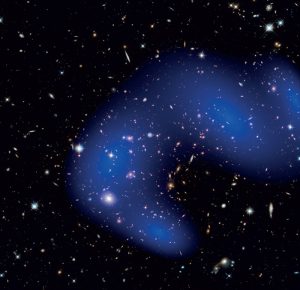
Introduction
In the infinite expanse of the cosmos, one enigma continues to baffle scientists and astronomers alike: Dark Matter. For years, this elusive substance has concealed itself in the cosmic shadows, leaving astrophysicists and researchers grasping at theories and hypothetical particles in pursuit of a solution. In this illuminating article, we dive deep into the enigmatic world of Dark Matter, guided by the expertise of NASA, a stalwart in space exploration. Together, we’ll shed light on the intriguing concept of “Dark Photons” and how they might be the missing piece of the cosmic puzzle.
The Dark Matter Enigma
Understanding the Cosmic Riddle
Before we delve into the potential solution, let’s first understand the problem at hand. Dark Matter is a mysterious, invisible substance that makes up a substantial portion of the universe’s mass. It doesn’t interact with light, making it completely invisible, hence the name “dark.” Its presence is inferred through gravitational effects on visible matter, such as galaxies’ rotation curves and the bending of light around massive objects.

NASA’s Authority in Cosmic Exploration
Introducing Our Knowledge Source
Before we proceed, let’s take a moment to recognize NASA’s unparalleled expertise in space exploration. The National Aeronautics and Space Administration (NASA) has been at the forefront of cosmic research for decades. With numerous groundbreaking missions and a legacy of pushing the boundaries of human understanding, NASA stands as an esteemed authority on all things space-related.
Our guide through the depths of Dark Matter is none other than NASA, an institution known for its unwavering commitment to unraveling the universe’s most perplexing mysteries.
Dark Photons: A New Cosmic Frontier
Shining a Light on the Solution
Now, let’s shine a spotlight on the protagonist of our cosmic narrative – Dark Photons. These enigmatic particles are hypothetical counterparts to ordinary photons, the particles of light we’re familiar with. What sets Dark Photons apart is their ability to interact with Dark Matter.
Intriguingly, Dark Photons could serve as a bridge between the visible and invisible realms of the cosmos. While they don’t interact with ordinary matter, they are the messengers of Dark Matter, potentially holding the key to unlocking its secrets.
Theoretical Foundations
Building the Case for Dark Photons
To understand the potential of Dark Photons, we need to delve into the theoretical framework. Scientists propose that Dark Photons could mediate the interaction between Dark Matter particles, providing a mechanism through which we can observe and study Dark Matter indirectly.
NASA’s Investigative Endeavors
The Quest for Dark Photons
NASA, in collaboration with international partners, has embarked on a quest to uncover the existence of Dark Photons. By designing cutting-edge experiments and instruments, they aim to detect the elusive signatures of Dark Photons, which could serve as compelling evidence for the existence of Dark Matter.
Dark Photons vs. Other Theories
Comparative Analysis
To provide a clear understanding, let’s compare the concept of Dark Photons with other existing theories about Dark Matter, such as WIMPs (Weakly Interacting Massive Particles) and axions. This comparative table summarizes key features and benefits, helping you discern the strengths of each theory.
| Theory | Interaction with Ordinary Matter | Observable Effects | Potential for Detection |
|---|---|---|---|
| Dark Photons | Limited | Indirect through Mediation | Ongoing Experiments |
| WIMPs | Weak Interaction | Direct Detection | Intensive Experiments |
| Axions | Extremely Weak Interaction | Unique Spectral Lines | Ongoing Research |
Table 1: Comparative Analysis of Dark Photons and Other Dark Matter Theories
Conclusion
A Cosmic Journey with NASA
As we conclude our cosmic journey with NASA, we’re left with a sense of optimism. Dark Photons represent a promising avenue in our relentless quest to unveil the secrets of Dark Matter. With NASA’s unwavering commitment and the scientific community’s collective dedication, we stand on the brink of potentially illuminating the cosmic shadows that have shrouded Dark Matter for so long.
In the grand tapestry of the universe, Dark Photons might just be the threads that bind the visible and the invisible, providing a path to understanding one of the most profound mysteries of our cosmos.
So, let us continue to gaze at the stars, for in their distant glow, we may find the answers we seek.










